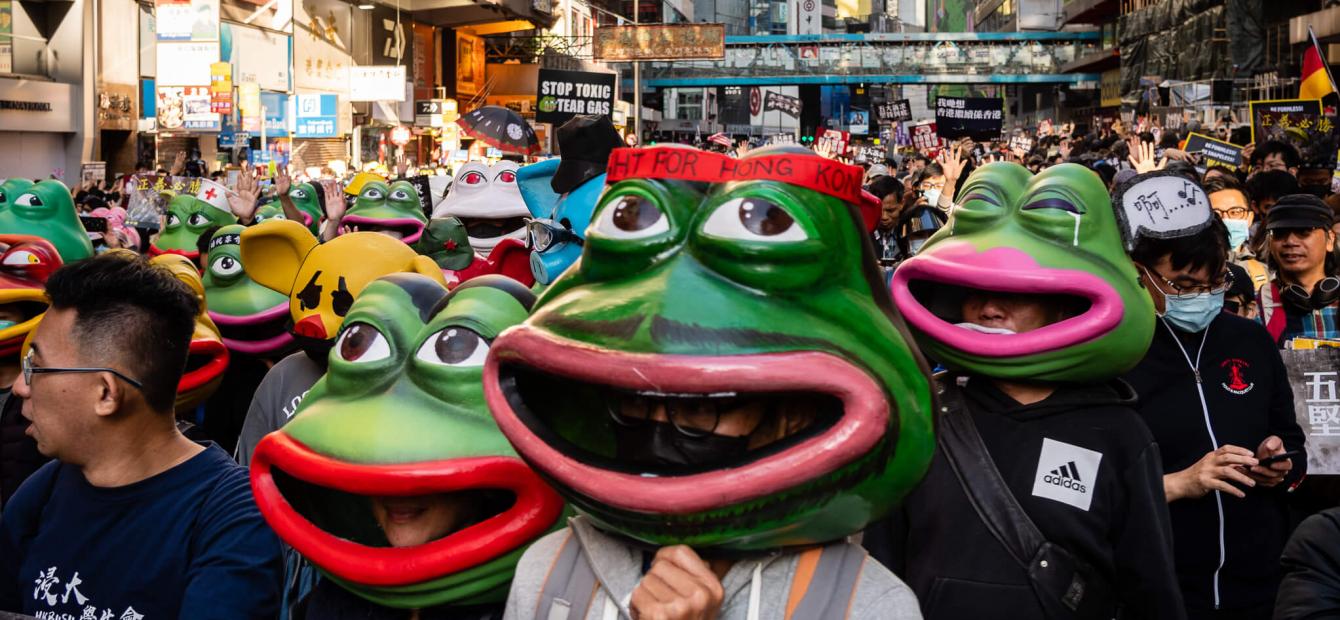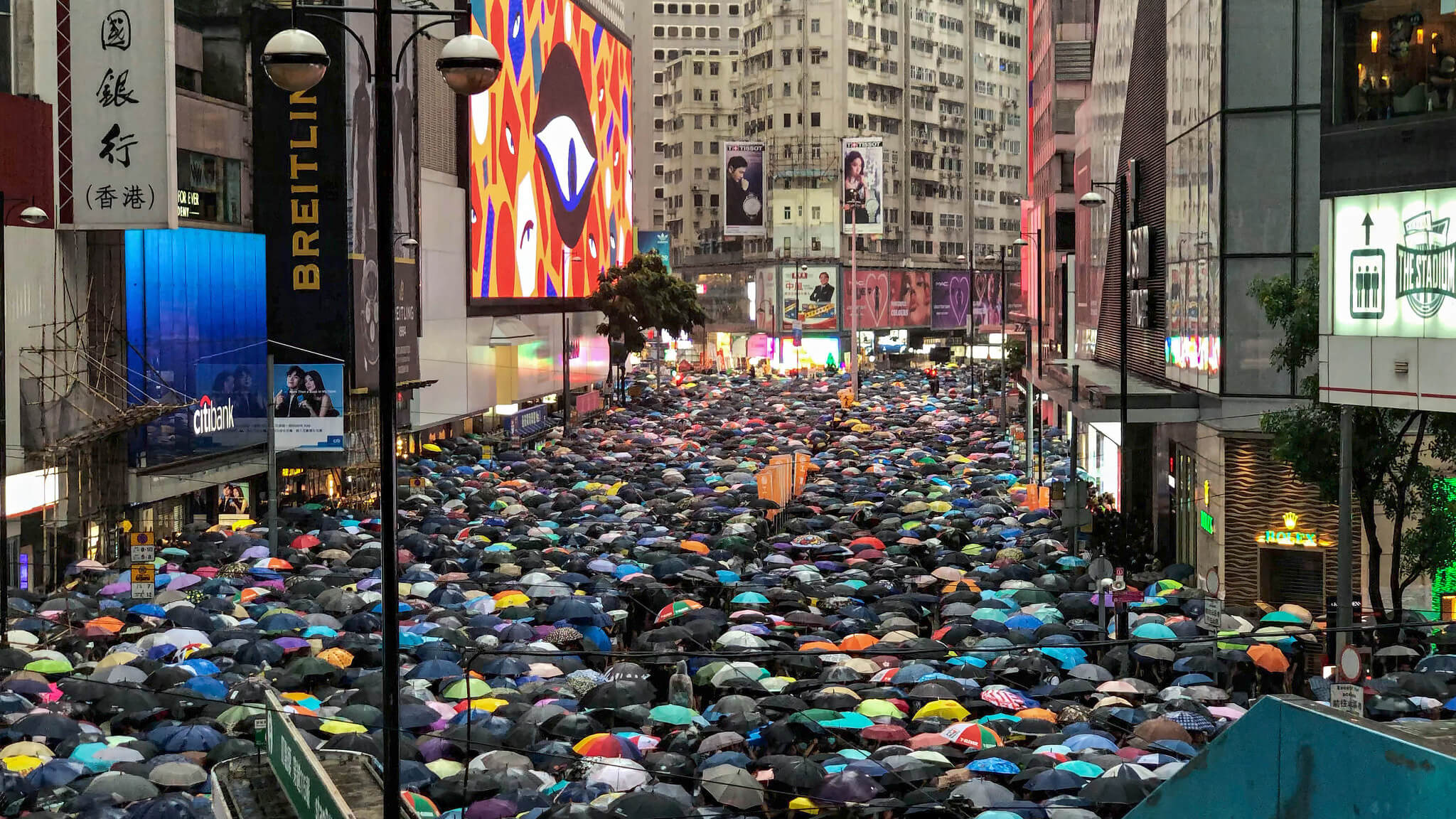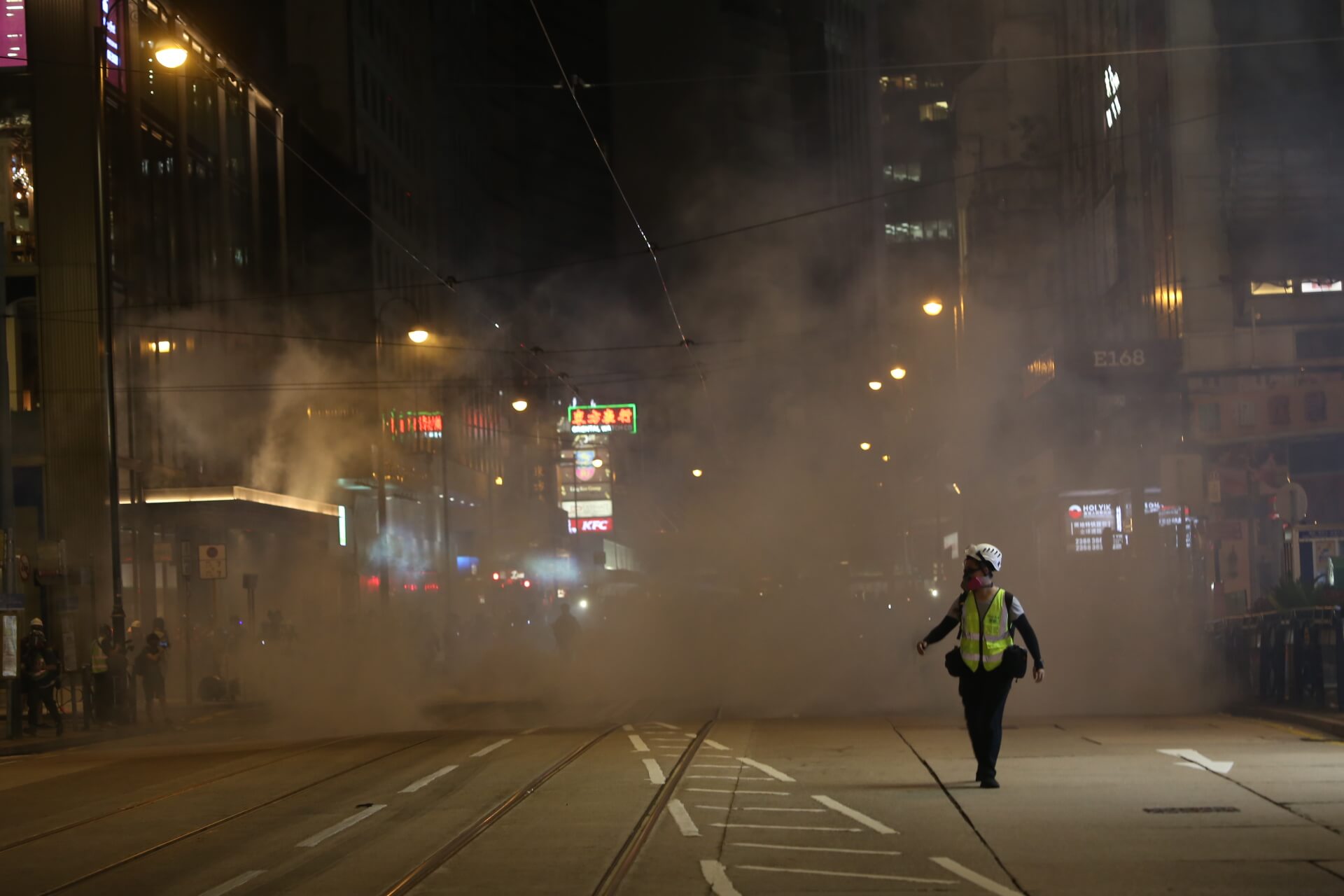
Hong Kong: Tech companies becoming mediators in protests?
Technology and social media have proven to be very effective in mobilising protests. This was also the case during the recent protests in Hong Kong. However, China was also very successful in influencing social media and technology companies to undermine the use of technology by protesters and to stifle the international effects of negative press coverage.
As early as March 2019 demonstrations were starting over Hong Kong’s controversial Fugitive Offenders and Mutual Legal Assistance in Criminal Matters Legislation Bill, or as it is more commonly known, the Extradition Bill. Over the following months the protests would grow to become major international news.

The role of social media in protests came to the fore during what the US State Department coined the ‘Twitter Revolution’ in Iran in 20091 , but was also applicable to Egypt and Tunisia in 2011 and more recently to Sudan in 2018.
In countries where not everyone has access to technology, asynchronous communications strategies work well. This allows one person or group to send a message which is picked up by those that can get access to it. These messages then spread by non-technical means, like word of mouth.
Social media mobilisation in Hong Kong
Hong Kong is far more economically developed than countries where Twitter Revolutions have happened previously. The permeation of technology into its society is having a different effect on protests than has been seen before. The level of technology adaptation allows for direct peer to peer messaging, enabling quick back and forth communications between protesters and far more detailed instructions to be constantly disseminated.
After being criticised by Chinese state media, tech companies like Apple have removed apps from their app store that helped the protesters in Hong Kong
Yet, unlike other large national protests, in this instance it is unclear to what extent technology and social media have helped the protesters. Tech companies, like Apple, were criticised for removing apps that helped the protesters from their app store. The app in question helped protesters track where police were, using data crowd sourced from protesters, enabling protesters to avoid blockades and arrests.
The app was removed the day after it was criticised by Chinese state media2 , despite reports from Amnesty International that Police were ‘beating protesters who were not resisting’ and found ‘evidence of torture and other ill-treatment in detention’.3
In order to spread message, Hongkongers are Air Dropping each other content. Air Dropping is an encrypted peer to peer way for sharing documents or files, which is built into Apple software and does not require an internet or WiFi connection.
‘Air Dropping’ gives protesters a way to bypass established networks and circumvent censorship measures being taken by the authorities
This allows for more data heavy content to be shared directly: videos, blog posts with complex arguments and misinformation can all be shared quickly and anonymously, based only on proximity, not on prior connection. It also gives users a way to bypass established networks and circumvent censorship measures being taken by the authorities.
Social media also helps to change the way that protests are organised, helping protests reduce the fiscal costs of spreading ‘logistical information about when, where, and how potential protests will occur’.4 There have been protests since before the internet was invented, but the costs associated with printing and distributing material are now far lower.
It also lowers the risk of being arrested; the more protesters are present, the lower the chance that any one protester is singled out by the police. Protesters can share what are positive, non-violent, stories of protest on social media, creating a virtuous cycle where the more protesters there are, the more protesters they can attract.
Keeping momentum with social media
The sharing of contents is not what causes the protests though. Any misinformation being spread does not cause protests either; it is a symptom of a wider problem. Social media dissatisfaction is not an instigator of protest but can be a good bellwether for it.
Dissatisfaction stems from deeper social grievances. The Legislative Council of Hong Kong found that primary and secondary school students spent up to 55 hours a week in class, extra lessons, or studying and there has been a 111% upsurge in suicides committed by students aged 10-20 in primary and secondary education.5 Despite this there are lower graduate wages and higher rent than ‘almost anywhere else in the world’.

Social media has added novel elements to traditional protest. The hyperconnected nature of Hong Kong has helped residents share their dissatisfaction and social media can create a form of global solidarity for a movement. Before social media, keeping momentum behind a social movement (especially in a country with state-controlled media) would be difficult. Getting content out could often be illegal.
China stifling international criticism
Now there is such a wealth of content surging from Hong Kong it has created huge spill over effects in the West. After a Houston Rockets executive, Daryl Morey, tweeted “Fight for freedom, stand with Hong Kong”, the NBA even moved to deescalate the situation: Chinese sponsors pulled out of the Rockets and CCTV (Chinese State Television) suspended broadcast of the NBA.6
With such a large market in China, the NBA worked tirelessly until the situation had normalised.
In video games, where there is a large market for Western companies, Activison Blizzard has its own controversy. A professional video game player, Ng Wai Chung, stated during a tournament ‘Liberate Hong Kong, the revolution of our times’. Again, China moved fast to pressure Activision Blizzard to ban the player.7
This prompted US Senator Marco Rubio to note that ‘China using access to market as leverage to crush free speech globally.’8 In cases where China has had a financial stake, it has continued to use that as a lever to get companies, as well as their employees or consumers, to not comment on the Hong Kong protests.
In the Hong Kong protests, China has been very effective in leveraging its soft power to stifle the international effects of negative press
Darin Christensen and Francisco Garfias write in their paper ‘Can You Hear Me Now?’ that over time social media causes ‘governments [to] refrain from squashing demonstrations’ because of the negative media attention.9 The problem is that in the Hong Kong protests, China has been very effective in leveraging its soft power to stifle the international effects of negative press.
Concerned that China was using corporate links in America to squash online and offline dialogue around the protests, a bipartisan group of lawmakers introduced a bill to the US Senate designed to protect US workers from being reprimanded for advocating for the Hong Kong protests.10
As the world continues to become more interconnected, we should expect to see more tensions emerging as social media and technology companies are forced to become mediators in both international and domestic agitations.
- 1‘We are witnessing the end of the “Twitter Revolution”’, New Statesman, 27 November 2019.
- 2‘Is Apple helping HK rioters engage in more violence?’, People’s Daily, 9 October 2019.
- 3‘Human Rights in Asia-Pacific’, Amnesty International, review of 2019.
- 4Andrew T. Little, ‘Communication technology and protests’, The Journal of Politics, 23 September 2015.
- 5‘Overall study hours and student well-being in Hong Kong’, Legislative Council of Hong Kong.
- 6‘Hong Kong protests put N.B.A. on edge in China’, The New York Times, 7 October 2019.
- 7‘What to know about Blizzard, Hong Kong and the controversy over politics in Esports’, Time, 21 October 2019.
- 8Marco Rubio on Twitter.
- 9Darin Christensen and Francisco Garfias, ‘Can you hear me now? How communication technology affects protests and repression.’ Quarter Journal Political Science, 29 March 2018.
- 10‘Preventing Foreign CENSORSHIP in America Act’, Congress.gov.




0 Reacties
Reactie toevoegen